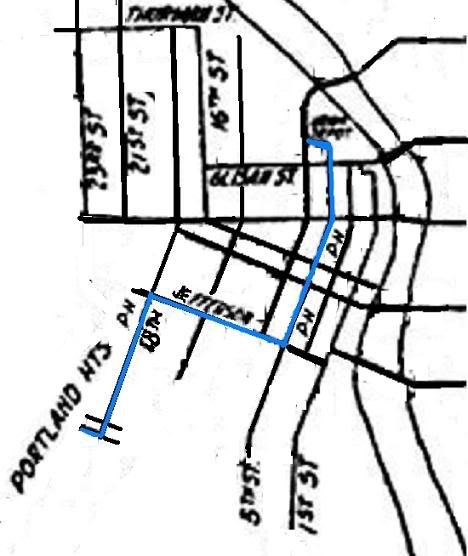
From there it continued south on Chapman to Mill, where it climbed a 1,040 foot-long wooden trestle w/ a 20.93% grade (20 feet vertical for every 100 feet horizontal - which, of course, equates a climb in elevation was over 200 feet from Mill to Elizabeth).
Trestle under construction, November 1887.
It was an expensive & complicated (but impressive) affair, & public operation of the cable-car line did not commence until February 22, 1890, just as the 1st electric trolleys began gliding up & down 2nd Street in January.

View of the trestle from the northwest. The houses line Montgomery Drive.
Two days after opening a cable-car left the turntable at the top of the trestle & failed to pick up the cable, so that the car succumbed to gravity and accelerated very quickly. The crew panicked & jumped off the car(!), & the car flew down the trestle, w/ 3 passengers on board, until it overturned at the curve onto Jefferson (no one seriously hurt).
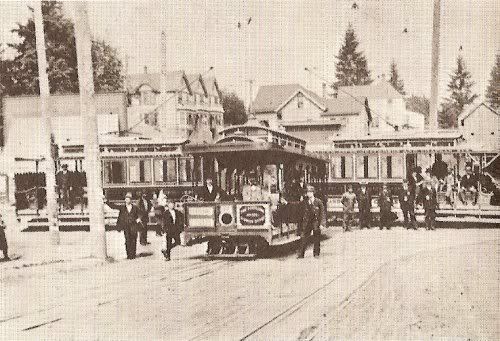
Passengers transferring from electric cars to a trestle-bound cable
car at Jefferson & Chapman Streets (Chapman is now 18th).
Despite completing the line & plans to extend the line west to Canyon Road at Sylvan (and from there to Beaverton), the Portland Cable Railway Company was spending all its capital on construction & not coming close at all to breaking even in revenue, & declared Bankruptcy in early July, a mere 6 months after commencing service.
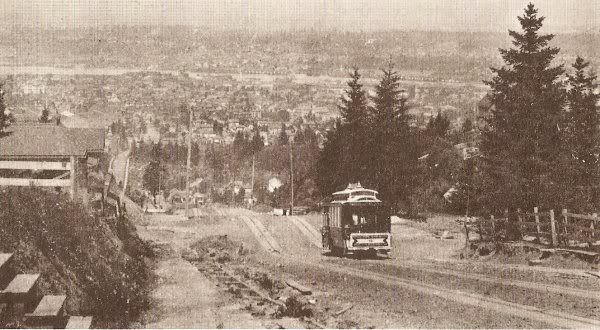
Cable car descending at S.W. 18th & Clifton, a few blocks above the trestle.
To add insult to injury, on July 11th, Car No. 13 broke loose from the cable at the powerhouse & rolled down 18th to Jefferson where it overturned. Car No. 18 then did the exact same thing & slammed into the overturned Car 13!

Cable car in front of powerhouse & shop at Mill & 18th.
Today the above-pictured powerhouse & shop is technically underneath the approach to the Highway 26 Tunnel. I find this view, looking up the trestle from its base, is one of the more visually striking images of the trestle. How could this trestle NOT dominate the landscape? For me, its existence has the additional attraction of being built in less, uh, litigious times: there are no railings on the trestle and the cable-cars appear to be entirely of the "open" variety.
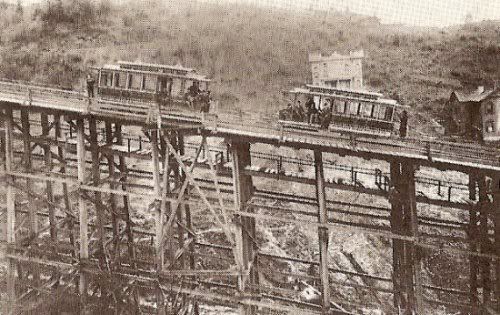
Two cablecars pose on the trestle (see, everyone is looking at the camera).
The bankrupt line was sold in public auction to a bank, who immediately incorporated the City Cable Company to continue operations. The line eventually came under the aegis of the Portland Traction Co., which converted it to electric power in 1896, w/ the exception of the trestle: cable cars continued to make the climb & descent between Jefferson to Spring streets.
Cable car service continued until all-electric service to Portland Heights & Council Crest became possible in 1904 with the completion of the Vista Bridge.

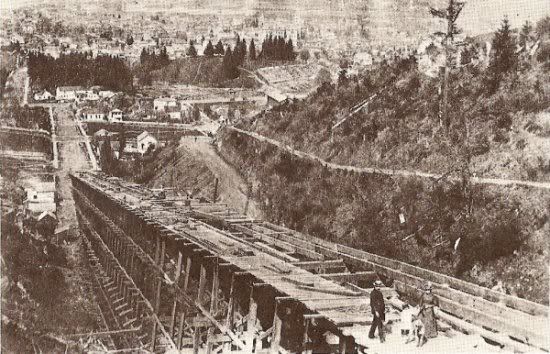
2 comments:
hello comrades really like the blog
is very interesting, has some good arguments and comments are pretty good.
Generic Viagra
I like to fix things all the time, and i always have a lot of cables around me, around my house. But i believe they are very useful, like this blog. I liked it very much.
buy viagra
Post a Comment